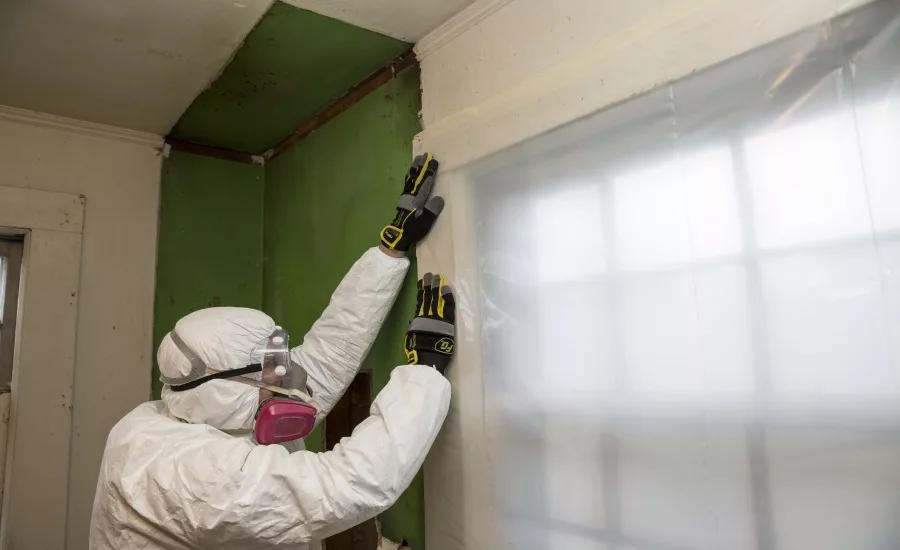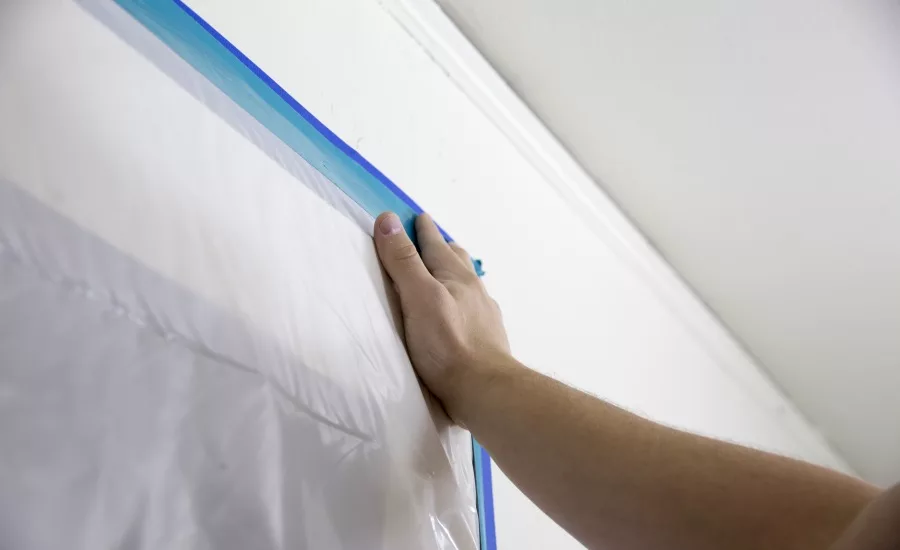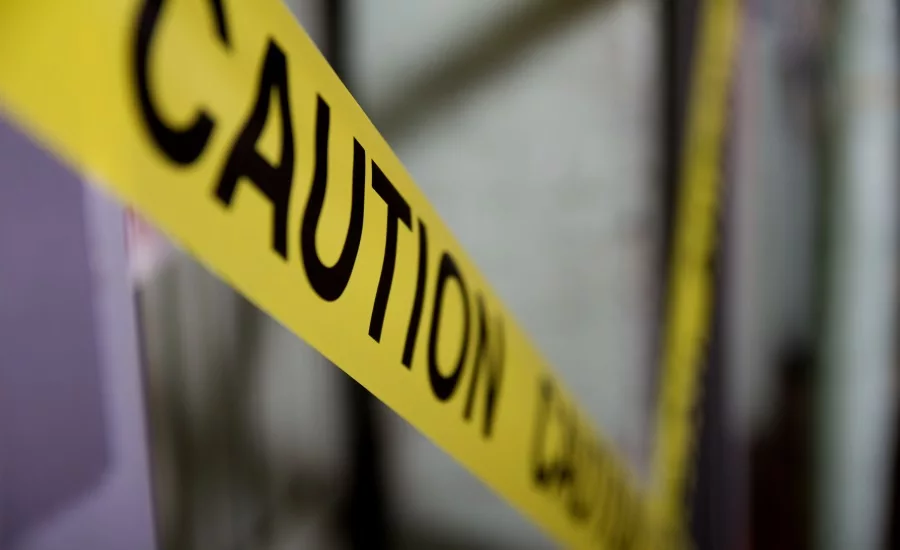Are You Sticking to the Right Tape for Each Restoration Project?
Save room in your toolbox for tape!

Double-sided tapes can also be used to build containment systems, typically offering a one-step solution that takes the place of painter’s and duct tapes.

In the traditional two-step method of building containments, painter’s tape and duct tape are often used together.

Printed barricade tapes help promote safety on the job site by allowing contractors to mark potential hazards.
When it comes to getting ready for restoration, renovation, abatement and remodeling jobs, proper preparation is key. That includes making sure you have the right tools on hand. And, saving space in your toolbox for tape.
Painter’s tapes, duct tapes, double-sided tapes and barricade tapes all have a place and purpose when it comes to prepping your work area.
Let's start with building containments. There are two methods to building containments: a two-step method and a one-step method.
In the traditional two-step approach, painter’s tape and duct tape are often used together. Painter’s tape, i.e. blue masking tape, protects surfaces from damage to drywall or plaster when duct tape is used to hang poly-sheeting against walls and/or ceilings. When using this method, it’s imperative to pick a duct tape that is strong enough to securely hold the poly-sheeting for the duration of the job.
Duct tape is also a good choice when covering a carpeted floor with poly-sheeting as its durable poly-coated cloth construction can withstand scuffing from foot traffic, while its aggressive adhesive won’t pull loose from the carpet.
Double-sided tapes are a good choice when using the one-step method to build containment systems. A double-sided tape with a differential adhesive, i.e. a medium adhesive on one side and a more aggressive adhesive on the other side, can take the place of both a painter’s tape and a duct tape when securing poly-sheeting to walls and ceilings.
A more traditional double-sided tape – one with an aggressive adhesive on both sides – can also work to hold poly-sheeting to carpet.
When choosing the right tape – and method – for the job, be sure to ask yourself how secure the work area needs to be. Depending on the level of damage or what you are trying to contain, different types of barriers may need to be constructed.
Smaller areas of limited containment can often be prepped by using a single layer of poly-sheeting (usually 6 mil) to section off the area, and then affixing the poly-sheeting to the floor and ceiling with duct tape or a double-sided tape.
If the floor or ceiling are too badly damaged to securely seal the poly-sheeting to them, a frame can be built around the affected area and then the poly-sheeting can be attached to the frame instead.
Larger areas of full containment typically use two layers of poly-sheeting, and may also have a decontamination chamber or airlock. These areas are also usually under negative air pressure with a HEPA-filtered fan that is exhausted outside of the building structure.
As you are prepping to build the containment, don’t forget: safety first. Safety is always top priority on the job site. That’s why barricade tapes should also be in your toolbox. Barricade tapes can be used to mark or restrict work areas and are an excellent way to promote safety throughout the duration of the job. These colorful, clearly printed tapes are often used to communicate caution, particularly warning workers and other people on the job site of dangerous locations and hazards. These tapes are also colored to comply with OSHA standards: red for danger and yellow for caution.
A note from the sponsor:
From containing the area to managing the work zone, tapes are a must for proper prep work. When it comes to stocking your toolbox for your next remediation, restoration or abatement job, Shurtape has the tapes you need to get the job done:
- CP 327: Premium grade blue containment tape offering durability and a strong hold for restoration and abatement jobs.
- PC 608: Contractor grade, co-extruded poly-hanging duct tape offering high tack and exceptional performance when building containments for remediation, restoration and abatement jobs.
- DS 154: Professional grade, double-sided containment tape used as a one tape, one step solution for creating high-performance containment systems. DS 154 is constructed with a premium grade painter's tape adhesive on one side for 21-day clean removal from a variety of surfaces and an aggressive adhesive on the other that securely holds poly-sheeting and other protective coverings. When the job is done, the tape and poly-sheeting remove cleanly and easily in one step, without damaging the surface.
- BT 100: Non-adhesive barricade tape for marking restricted areas and managing access to work sites.
Learn more about Shurtape’s tape solutions for restoration, renovation, abatement and remodeling applications at Shurtape.com. Or visit Shurtape.com/Restoration to see how DS 154 double-sided containment tape can help you cut steps, not corners, on your next job.
Looking for a reprint of this article?
From high-res PDFs to custom plaques, order your copy today!








